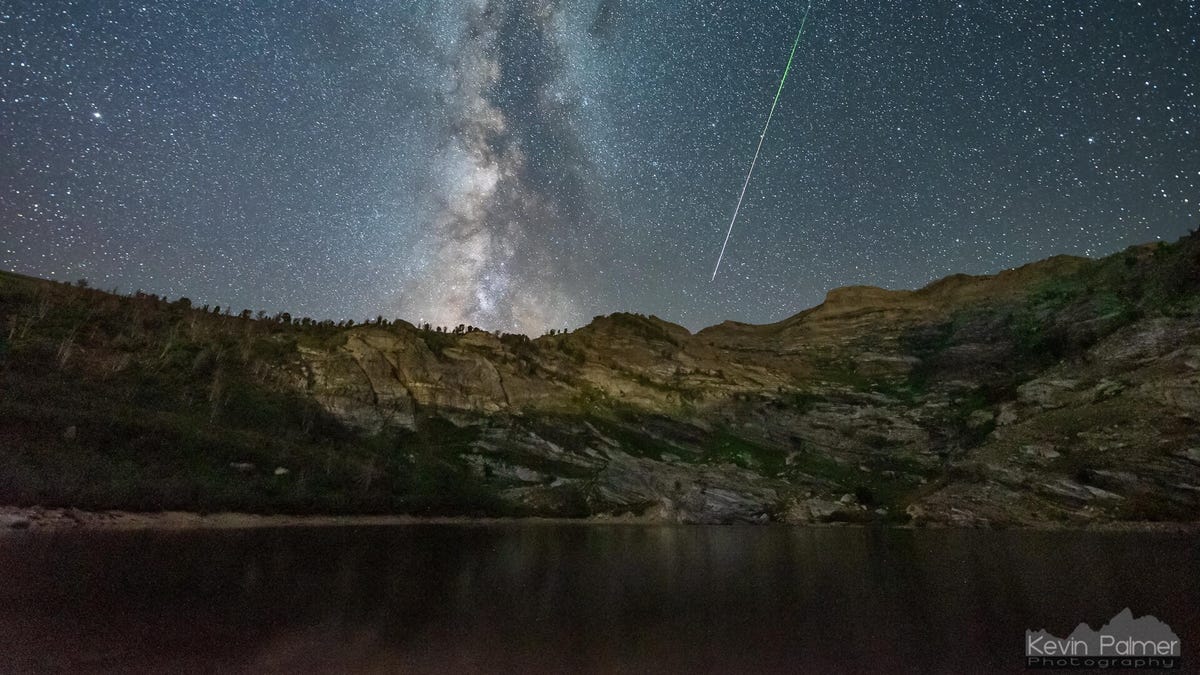Sunday Could Bring a Highly Unusual Meteor Storm: How to See It
A lunar eclipse will lend the moon a reddish hue this weekend, but there's also an opportunity to see some actual fire in the sky.

A meteor above Angel Lake in the Ruby Mountains of Nevada. Taken by Kevin Palmer on Aug. 10, 2021.
Skywatchers might get a bonus this weekend, when a meteor storm not associated with a major meteor shower could light up the morning.
In the pre-dawn hours on Sunday, May 15, our planet will pass through a field of debris left by a large asteroid known as 2006 GY2, which completes a single orbit around the sun every 925 days, and crosses Earth's orbit in the process.
"This object is actually a double minor planet with the main body estimated at 400 meters (1,312 feet) and the secondary satellite at 80 meters (262 feet)," Robert Lunsford wrote for the American Meteor Society. "While the density of debris field is unknown, the fact that this object is a double minor planet may provide a dense stream of debris."
As bits of dust and space rock collide with our atmosphere, they can burn up and create fleeting "shooting stars" or brighter-burning fireballs.
AMS isn't making predictions about exactly how many meteors we might be able to see in the sky, but Lunsford notes the potential peak watching time is as close to 3:20 a.m. PT as possible.
"This timing is ideal for the southwestern USA and Mexico. Unfortunately the moon is only one day from full and any faint meteors will most likely be obscured by the intense moonlight," Lunsford said.
The moon itself will be performing just hours later, with a total lunar eclipse taking place Sunday evening into Monday morning.
If you're able to get up before dawn Sunday to check out the meteor show, you'll want to choose a viewing location as far from light pollution as possible with a broad view of the sky. Give yourself at least an hour for the whole viewing experience, including 15 to 20 minutes for your eyes to adjust.
Good luck, and let me know on Twitter what you see.

